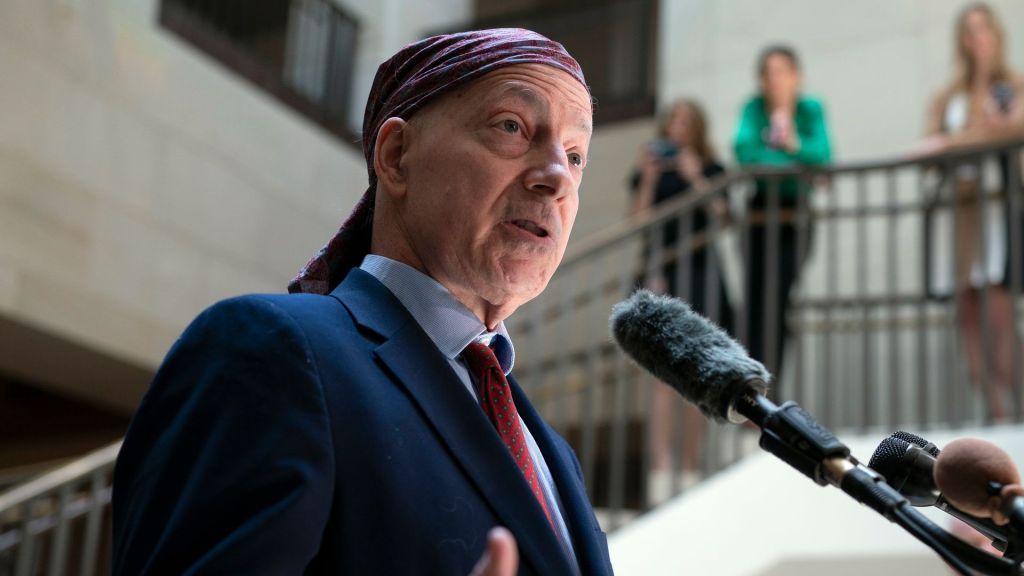
ISAAC POOLE:
“IT IS LIKELY TO FOLLOW A GOOD OLE FASHION CREDIT CRUNCH PATHWAY.” 1:51}
RANDY WATTS:
“THIS IS GONNA BE EXACERBATED BY WHAT IS CLEARLY BECOMING A CREDIT CRUNCH IN THE BANKING SECTOR.”
JIM CARON:
“IS IT A CREDIT CRUNCH LIKE IN 2008 OR IS IT A CREDIT TIGHTENING.”
SIMONE DEL ROSARIO:
CREDIT CRUNCH COULD BE THE PHRASE THAT PAYS – IF YOU’RE BETTING ON A U-S RECESSION.
WITH RISING INTEREST RATES AND NOW BANKING UPHEAVAL ON TOP OF IT, IS THE U-S ON THE VERGE OF THE NEXT CREDIT CRUNCH?
MARK ZANDI:
A CREDIT CRUNCH IS THE INABILITY OF HOUSEHOLDS AND BUSINESSES TO GET THE CREDIT THAT THEY NEED.”
SIMONE DEL ROSARIO:
I’M NOT SURE I COULD SAY IT BETTER. A CREDIT CRUNCH REFERS TO A SIGNIFICANT DROP IN BANK LENDING ACTIVITY DRIVEN BY A SHORTAGE OF FUNDS.
MARK ZANDI:
“THE POSSIBILITY OF THE RESTRICTION OF CREDIT TO BE SO SIGNIFICANT THAT UNDER ALMOST ANY TERMS YOU CAN’T GET A LOAN THAT’S CERTAINLY A RISK OF SOMETHING THAT MAY HAPPEN. IF THAT DOES, THAT’S A CREDIT CRUNCH. WE’RE NOT THERE YET, BUT THAT’S CERTAINLY A POSSIBILITY GOING FORWARD.”
SIMONE DEL ROSARIO:
A PRIME EXAMPLE IS WHAT HAPPENED IN THE WAKE OF THE 2008 FINANCIAL CRASH.
FINANCIAL INSTITUTIONS WERE ON THE HOOK FOR TRILLIONS OF DOLLARS IN WORTHLESS SUBPRIME MORTGAGES.
BANKS THAT SURVIVED IT DIDN’T HAVE THE RESOURCES TO BE OUT THERE MAKING A LOT OF LOANS. EVEN HIGHLY-QUALIFIED FAMILIES AND BUSINESSES STRUGGLED TO GET CREDIT.
ACCESS TO CAPITAL IS WHAT FUELS GROWTH IN THE ECONOMY. SO THE CREDIT CRUNCH DRAGGED ON GROWTH FOR YEARS TO COME.
MARK ZANDI:
“THE ‘08, ‘09 FINANCIAL CRISIS IS IN A LEAGUE OF ITS OWN. WHAT WE’RE EXPERIENCING NOW, IT DOESN’T FEEL VERY GOOD, IT’S VERY UNCOMFORTABLE, BUT IT’S NOTHING COMPARED TO WHAT WE SUFFERED BACK IN THAT CRISIS.”
SIMONE DEL ROSARIO:
LOAN ACTIVITY HAS ALREADY BEEN ON THE DECLINE BECAUSE OF THE FEDERAL RESERVE’S FIGHT AGAINST INFLATION.
WHEN INTEREST RATES ARE HIGHER, PEOPLE ARE LESS LIKELY TO TAKE OUT LOANS AND SPEND MONEY.
JEROME POWELL:
SO THE KEY IS WE HAVE TO HAVE POLICIES, GOTTA BE TIGHT ENOUGH TO BRING INFLATION DOWN TO 2% OVER TIME. IT DOESN’T ALL HAVE TO COME FROM RATE HIKES. IT CAN COME FROM, YOU KNOW, FROM TIGHTER CREDIT CONDITIONS. 30:04}
SIMONE DEL ROSARIO:
A POTENTIAL CREDIT CRUNCH CAN BE AN UNPREDICTABLE ALLY IN THE FED’S INFLATION FIGHT.
ON THE HEELS OF TWO OF THE BIGGEST U-S BANK FAILURES IN HISTORY…MANY EXPECT BANKS TO FURTHER LIMIT LOAN ACTIVITY.
BUT EVEN BEFORE THIS DISORDER, IT WAS ALREADY HAPPENING.
IN A FED SURVEY ABOUT 44% OF BANKS REPORTED TIGHTENING STANDARDS FOR BUSINESS LOANS THE FIRST QUARTER OF 2023.
MARK ZANDI:
“THERE’S A LOT OF UNCERTAINTY HERE. HOW SIGNIFICANT IS THIS CREDIT CRUNCH GOING TO BE? HOW BIG AN IMPACT IS THAT GOING TO HAVE.”
“I’M MUCH LESS CONFIDENT IN MY OPTIMISM ABOUT AVOIDING RECESSION THAN I WAS TWO WEEKS AGO BECAUSE OF THE BANKING CRISIS.”
SIMONE DEL ROSARIO:
ACHIEVING DISINFLATION WITHOUT A RECESSION WAS ALREADY A TOUGH TEST TO PASS WITH THE FED’S BLUNT TOOLS.
BUT AT LEAST THEY HAVE CONTROL OVER THOSE TOOLS. A CREDIT CRUNCH COULD BRING IN A WHOLE NEW SET OF UNKNOWNS.






